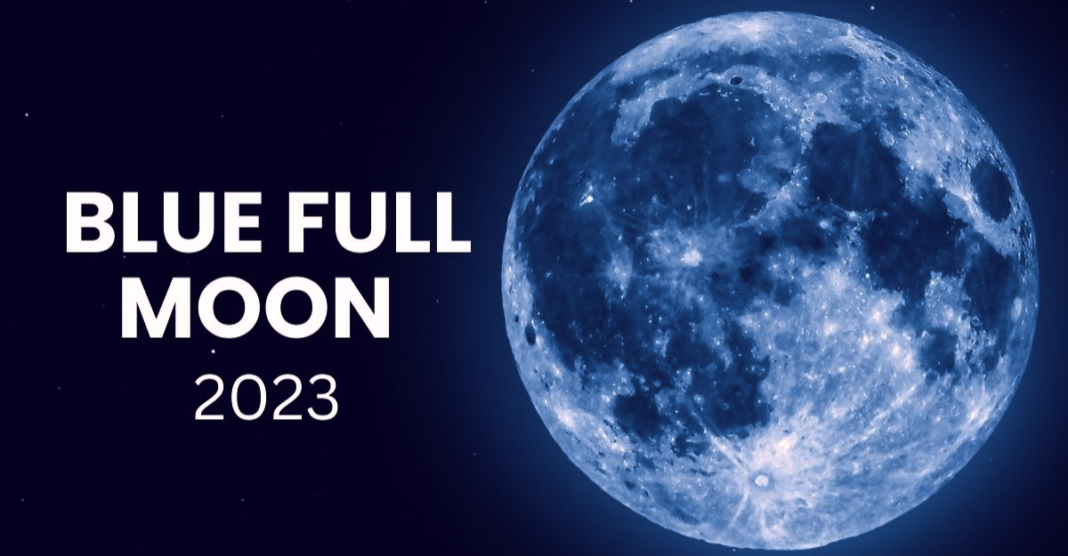The Super Blue Moon 2023 is expected to be visible on the evening of August 30 and the early hours of August 31, according to the most recent official information accessible online. It is the result of the alignment of three lunar phenomena: a full moon, a supermoon, and a blue moon. The world’s skywatchers are preparing to see a rare and fascinating celestial phenomenon shortly. Keep an eye out for the Super Blue Moon as it graces the night sky.
On this Wednesday, people will observe Raksha Bandhan throughout the day, and the night will display the year’s largest and brightest blue moon 2023, with experts anticipating the peak at 7:06 a.m. IST, or 9:36 p.m. ET. The moon won’t be blue, despite its name; instead, it will look orange in hue. While this sounds fascinating, many people are curious about what exactly a “blue moon” is and how frequently it appears in the sky. Do not worry; we are here to help you with any questions. For more information on this astronomical marvel, continue reading.
Also read A live worm was discovered in the brain of an Australian woman, a global first.
What is a “blue moon”?
There are two distinct varieties of blue moons, but unfortunately, neither has a connection to the color blue. According to NASA’s accepted definition of a blue moon, they classify a seasonal blue moon as the third full moon occurring within a season that hosts four full moons. They refer to the second full moon appearing within a single calendar month as a monthly blue moon, a term coined due to the initial word’s confusion.
Time and Date has accepted the definition of a monthly blue moon instead of considering it an illusion. However, the Moon completes each phase in 29.5 days, which works out to 354 days for 12 full cycles. There is only a 13th full moon every two and a half years since there are only about 366 days in a year. The term “blue moon” is used for the additional full moon because it deviates from the established naming convention.
Also read Kazakhstan 40-Year Nuclear Testing History: Insights into a Legacy of Atomic Experiments
How frequently do blue moons take place?
A blue moon occurs only sometimes. A full moon happens every 29 days on average. As most months have 30 or 31 days, a month may occasionally have two full moons. The average frequency of blue moons is once every two and a half years. In 2018, there were two blue moons that occurred just two months apart, and one of them coincided with a lunar eclipse.A blue moon and a super moon will occur on the same night once more between January and March of 2037, which is another 14 years from now. This occurrence occurs around every 10 years.

